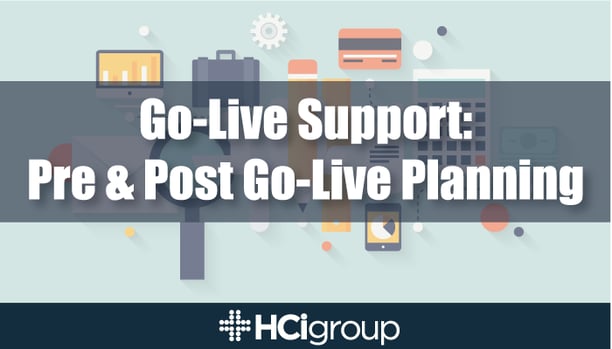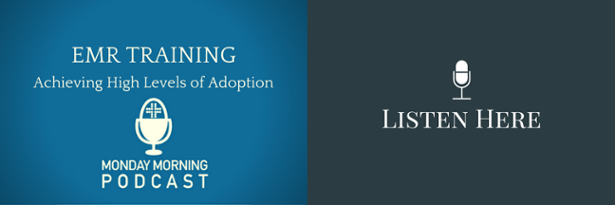Go-Live Support: Pre & Post Go-Live Planning


Last week, we published the first installment of our new Go-Live Support blog series, “Go Live Support: Operation Communication,” which honed in on the essential steps for developing a comprehensive Go-Live communication plan. If this is your first time checking out the new series, you can get caught up by reading the introductory post here and the “Operation Communication” post here.
This week’s topic will focus on pre and post Go-Live planning. As with our previous posts, the information provided here comes from the extensive, hands-on Go-Live project experience of David Chou (VP/CIO, Children’s Mercy Hospital), Bob Steele (HCI Executive VP, Clinical Services), and Stephen Tokarz (HCI Senior VP, Training & Activation).
Apart from making sure the actual Go-Live runs smoothly, the ultimate success of your Go-Live depends on two factors: pre Go-Live planning and preparation, and post Go-Live adoption and transition to support. It follows logically that if you don’t give adequate forethought to your Go-Live plan, you will leave yourself vulnerable to project pitfalls and organizational confusion. Similarly, if you have not fully developed a strategy for transitioning to support mode, you’re likely to cost yourself money and time with unnecessary overstaffing, as well as lower end-user adoption rates. As we work through the topics below, we will provide real-world examples of where things can go wrong if you haven’t sufficiently planned for each area.
1. Create an Operational Readiness Plan
Prior to the “Big Day,” you need to have a detailed operational readiness plan to ensure that all departmental processes and functions are in alignment. This should include a formalized list of policies and procedures to be followed by all end-users, trainers, and support staff. In order to accurately and comprehensively define processes, each end-user will need to have a thorough understanding of their individual workflow training.
For your operational readiness plan to work, you will need to ensure that it is based on clear, detailed job descriptions. With the massive organizational change that a new EHR system brings about, job descriptions will often need to be modified. Be sure to take into account the differences in workflow and processes between your new system and your legacy system; adjust job descriptions accordingly to accurately reflect the day-to-day duties of your end-users.
You want to avoid confusion with your staff by individually addressing any upcoming changes in their daily responsibilities, prior to training. It is the managers’ job, not the trainers', to educate staff on how their roles may be changing. You don’t want people showing up to class not understanding what they’ll be responsible for once you’re live on the system. In such cases, the trainer will be forced to delay class time in order to explain new job responsibilities to the staff.
2. Third Party Vendor Partnerships
It is to your advantage to engage with your vendor partner as early in the planning process as possible. Because Go-Live projects can necessitate the help of up to 500 or more external resources, there will be a significant number of individual tasks and activities to develop in order to outline the daily duties of your resources. This is, of course, in addition to your full-time internal staff.
With the addition of so many extra resources, it is essential to include your vendor partner in the development of the overall strategy. Ensure that you have adequate time to work with your vendor partner in the creation of a robust Go-Live Readiness Assessment and work schedule.
If you engage your vendor partner in the eleventh hour, you’re leaving yourself vulnerable to mistakes and the possibility of overlooking details. For instance, in a prior engagement where the Operational Readiness Assessment was developed without vendor involvement, a unit in the plan was labeled as a “subspecialty pavilion.” Because the vendor was not involved in the creation of the plan, the hospital was unaware that it would be necessary to identify the specific subspecialties within the unit, in order to provide them with more targeted at-the-elbow support. The oversight was not identified until the vendor was brought onboard for the Go-Live, at which point there was a last minute scramble to provide the subspecialty pavilion with the necessary support resources.
3. Transition to Post Go-Live Support
During the Go-Live, the number of patients scheduled will need to have been reduced to account for your providers’ initial learning curve as they get comfortable on your new EHR. To maintain high quality care for your patients and the satisfaction of your clinicians, you need to ensure that your providers do not feel overwhelmed by the numbers of patients they’re expected to see as they adjust to the new system.
However, as you transition back to a support model and productivity recovers, you should be ready to increase patient scheduling to pre Go-Live numbers. If you have employed robust physician personalization labs and ensured strong targeted support, clinician adoption should be high and they will feel comfortable with the escalation of patient visits.
As the Go-Live winds down, you will also need to have a defined “transition to support” plan and criteria for your support staff. Because the workload will taper during this period, prepare to make corresponding adjustments in your staff. A plan for ramping down both internal and external At-The-Elbow support and Super Users should be in place. Concurrently, you will need to develop criteria for phasing down Command Center Operations. Typically, this is accomplished by tapering down from staffing the Command Center 24/7, to 12/7, until you are able to shut it down entirely. To prepare for the closing of the Command Center, you will need to define the criteria and hand-off processes for resuming normal support operations.
Next week, we will be covering our third topic of the series: Training and Support. As you will see, many of the topics discussed will closely align with the development of your pre and post Go-Live planning strategy.
Keep up with the latest industry expertise and each new post in the series by subscribing to the blog below.


